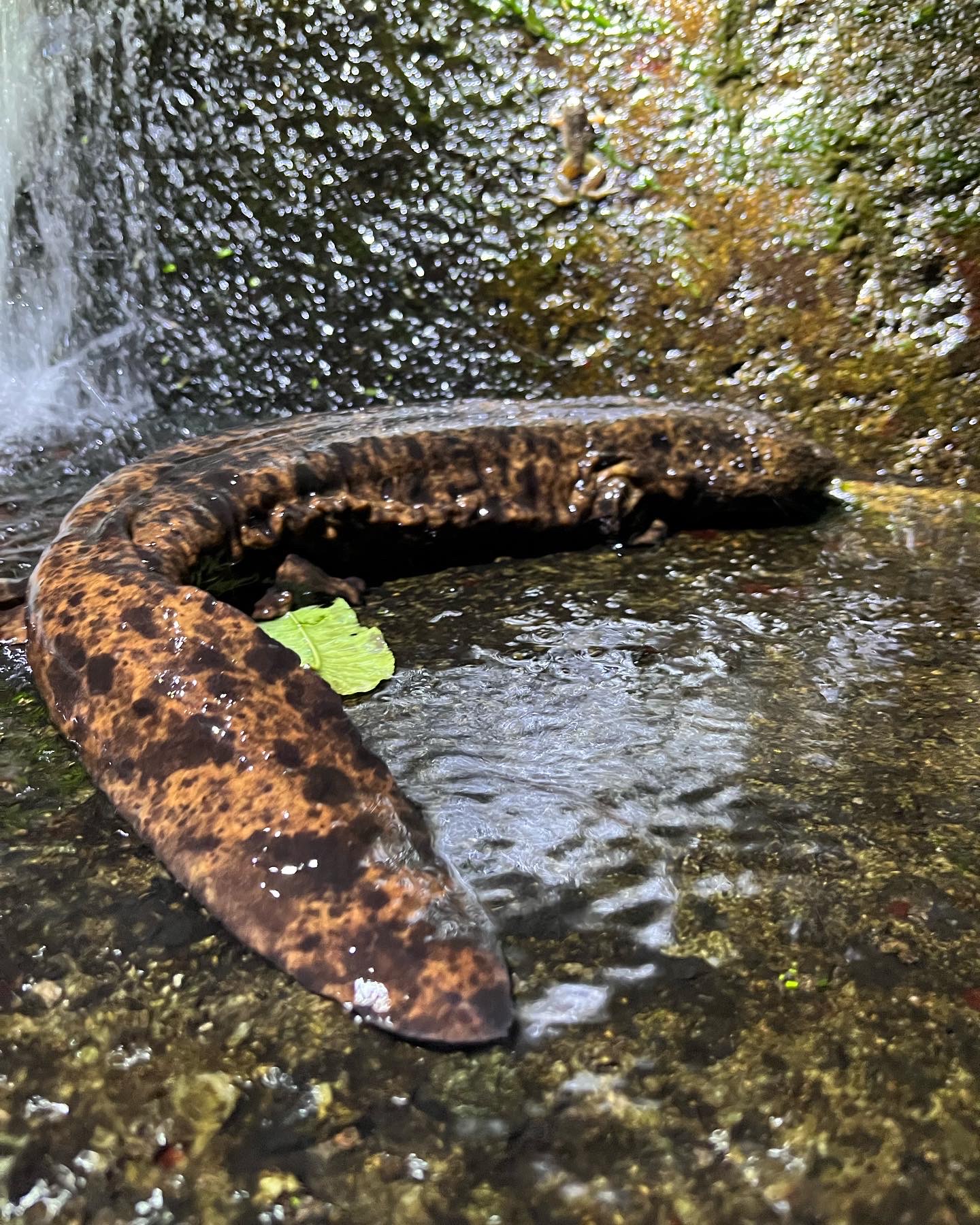By Richard Pearce, Sustainable Daisen – Japan
The Sustainable Daisen Non-Profit Organisation (NPO) recently brought local people, university students and volunteers from the US Military together to take direct conservation action to help the Japanese giant salamander (JGS, Andrias japonicus) in a unique and important habitat.

After several months of hard work and frustration, Sustainable Daisen NPO was granted special permission to build temporary bypass slopes using natural materials in an important habitat for JGS in Daisen Town. The concrete weirs and dams in the Nawa River Basin (and elsewhere in Japan) act as barriers to the free movement of the JGS. This prevents them from moving to breeding sites and also from returning to their preferred habitats after being washed downstream during torrential rains. The Nawa River basin is a special habitat for the JGS. It is unique in that it has relatively large numbers of JGS at a low altitude (of 100 meters or less) and also so close to the ocean. Elsewhere in Japan only small numbers of salamanders can be found at such low altitudes. Along with other volunteers, I have entered the rivers in the Nawa River basin every month for over a year and recorded the location and number of JGS stuck against the weirs and dams. This is a problem recognised by experts and government officials. However, what has been lacking until now is a sense of urgency and the commitment, motivation and manpower to implement direct conservation action and practically address the problem. Thankfully, that changed recently and we took an important step forward in our efforts to save the JGS in Daisen Town.
After visiting the area a few months ago and joining me for a JGS observational tour (https://www.bushidojapan.com/japanese-giant-salamander-viewing-experience), 3 members of the US Military (and truly wonderful people) from the Iwakuni US Base were moved into action and set about organising a group of volunteers to help with our project. On September 2nd, 21 US Marines, Army and Navy members travelled up from the Iwakuni American Military base. This wasn’t an official US Military programme; these kind people freely gave up their time and travelled up at their own expense to help with JGS conservation and build stronger bonds with their host country, Japan. The work itself involved moving several thousand rocks weighing many tons overall and I can not think of a more ideal group of volunteers than these guys and gals. Not only are they physically fit and strong individuals, they were also highly motivated and did the work with a smile and even laughter.

Importantly, students from Tottori Environmental University and some local people joined us and worked very hard in order to complete the mission. This is very important for the future of our projects; we will not be able to keep moving forward without the support of local people and the next generation of leaders.
The project was covered by Italian media and an NHK TV crew, which will ensure that the hard work of the volunteers will be both recognised domestically and internationally. I’m sure their efforts will inspire people both locally and further afield to take direct and practical conservation action.

Now that it has been recognised by local officials that the weirs are a problem for the future survival of the JGS and that bypass slopes are a practical way to remedy the problem, we need to push forward and ensure permanent bypass slopes are installed as soon as possible. The struggle continues but we took an important and big step forward thanks to these special volunteers.
Sustainable Daisen NPO’s core mission is to protect the Japanese giant salamander and its unique habitat in the Nawa River Basin of Mount Daisen. This requires considering the whole mountain ecosystem: the rivers, forests, farmland and villages. For more information, please visit https://www.sustainabledaisen.org
All photos @Richard Pearce

No Comments Yet